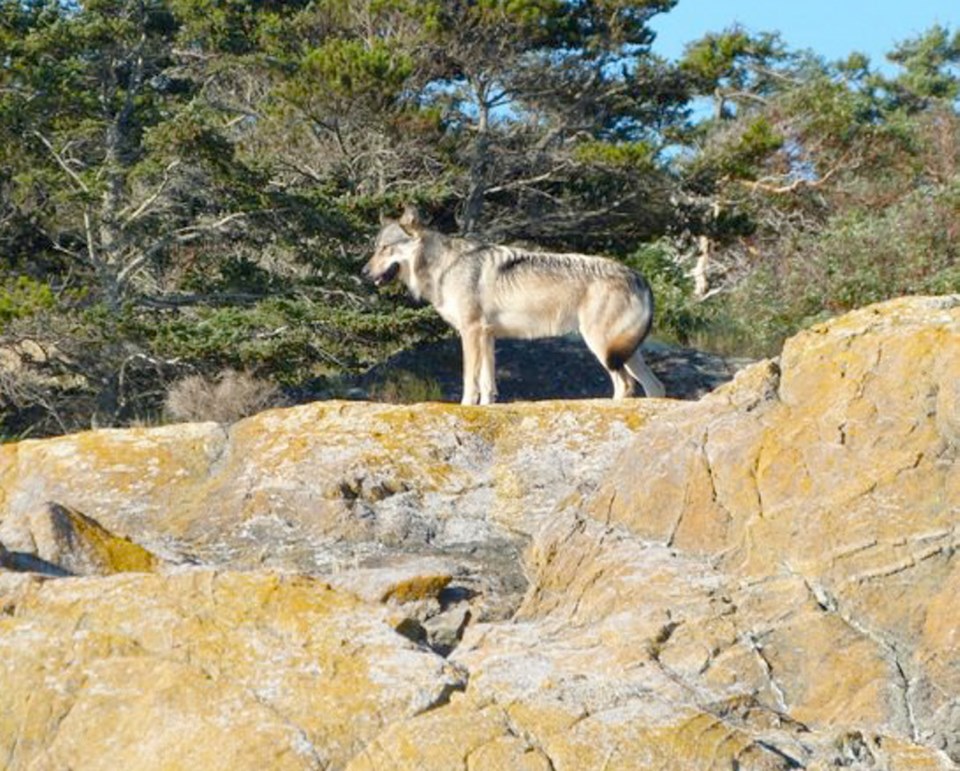About 350 wolves live on Vancouver Island, although it’s difficult to get an accurate count of the elusive and seldom seen animal, said Gary Allan, who runs Swell Wolf Education Centre in Nanaimo.
The vast majority — about 70 per cent — live in northern Vancouver Island, north of Campbell River and along the west coast of the Island down to Ucluelet. Very few wolves live on the east coast of the Island, although Allan said there are some in the mountains near Nanaimo, Ladysmith and Lake Cowichan.
The wolves that live on the Island are a subspecies of the North American grey wolf known as canis lupus nublus, some of which are considered coastal wolves, like Takaya, because of their marine diet, Allan said. Wolves tend to feast on deer, caribou and moose, but the diet of coastal wolves has adapted to include marine life, like river otters and seal pups.
A family-oriented pack animal, wolves often live in groups of about 12 to 15, making Takaya’s solitary life unusual.
Allan said the biggest threat to wolves on the Island are hunters and trappers.
The hunting season for wolves on the Island runs from mid-September to the end of June, and anyone with a hunting licence is allowed to kill three wolves per year, with no special tag required, he said.
A government-sponsored wolf cull meant to protect endangered caribou has killed a few hundred wolves in the province, but is not prevalent on the Island because of the lack of caribou.
Wolf advocates, including Allan, say the cull relies on flawed science, and reducing the wolf population is not shown to help caribou recover.
In the 1980s, the provincial government initiated an experimental wolf-control program in the Nimpkish Valley on northern Vancouver Island in an attempt to reverse the decline of Black-tailed deer, but government-sanctioned efforts stopped in the 1990s, according to a provincial report on wolf management.
There are an estimated 8,500 wolves in the province.



